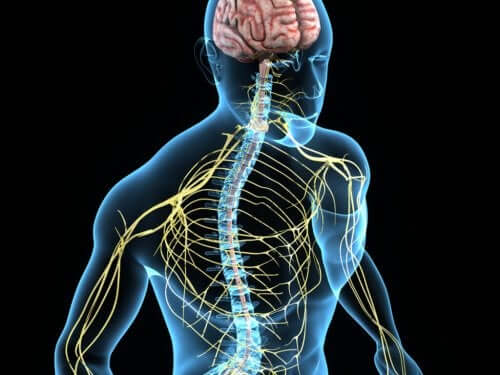Essential Tremor: Symptoms, Causes, and Treatments


Written and verified by the doctor Leonardo Biolatto
Essential tremor is common in the general population. In fact, it’s the most common movement disorder, a lot more prevalent than Parkinson’s disease. Statistically speaking, it’s twenty times more prevalent than Parkinson’s among adults.
Overall, the most affected age group is people over sixty-five. However, experts consider that the most common age of onset of the first symptoms is between ages forty and sixty. However, there have also been cases of infants.
Essential tremor is characterized by involuntary movements that manifest as persistent shaking. The tremors occur mainly in the upper limbs: hands and arms. The episodes usually occur symmetrically and with pauses. It’s a chronic situation that continues over time. However, it doesn’t manifest throughout the day and sometimes doesn’t even manifest every day.
Essential tremor isn’t life-threatening and isn’t associated with cognitive impairment or nervous system degeneration. However, although it’s cataloged as benign, it’s very bothersome. After all, this disorder also affects the patient’s ability to do many daily life activities. This includes writing, having a cup of tea, or tying shoes.
Causes of essential tremor
There aren’t enough scientific studies on the disorder to be able to determine the cause of the disease. This is because it’s a benign condition that progresses slowly.
However, it’s known that essential tremor is an alteration in the nervous system connections in the nuclei of movement. The thalamus, nigrostriatal pathway, and the cerebellum are parts of the nervous system responsible for regulating bodily movements. The scientific hypothesis is that essential tremor makes some of these regions undergo an abnormal change that ultimately produces involuntary movements.

The existence of familial cases, where parents and children suffer from essential tremor, primarily confirms a genetic component of the disorder. In fact, people also know this condition as “family tremor”.
This article may interest you: Auriculotherapy to Fight Parkinson’s Disease
Symptoms of essential tremor
First, it’s important to differentiate this condition from Parkinson’s. The key characteristic of this condition is that the involuntary movements happen when the person performs a specific movement or tries to maintain a certain posture. In Parkinson’s, the involuntary movements occur at rest.
In addition to this key sign, which is upper limb tremors, here are the other symptoms of the condition:
- Voice changes. Essential tremor can affect the larynx, altering voice generation in the vocal cords.
- Head movements. This is as if the person was saying “yes” or “no” with their heads. However, it’s involuntarily.
- Difficulty doing activities of daily living. Sometimes, although the tremors aren’t sufficiently evident, the person realizes they have difficulty grabbing something, using a tool, or simply writing.
If left untreated, symptoms tend to worsen with age. In fact, it’s been shown that the symptoms worsen and become more repetitive when a person consumes a lot of caffeine. Also, this happens in stressful situations or after a bad night’s sleep.

Treatment options
First of all, we should clarify that there’s no cure for essential tremor. Typically, the hygienic-dietary measure doctors indicate is to stop consuming caffeine. Also, medical professionals recommend various courses of action for stress, such as psychotherapy or sleeping pills.
Plus, some patients benefit from physical therapy and kinesiotherapy sessions aimed at improving muscle control, coordination, and balance.
Regarding the use of drug treatment, the following drugs are the most widely used and have the most scientific evidence:
- Propranolol. This is a beta-blocker. In fact, it’s possibly the most effective in reducing symptoms. However, patients with heart disease should take this drug with caution. This is especially if there’s a history of blockage. Plus, they should always do this under professional supervision.
- Primidone. This is an anticonvulsant.
- Antidepressants. Sometimes, doctors recommend these to control the stress that could be causing the disorder.
- Anxiolytics. These can help with stress management and sleep regularization.
- Botulinum toxin. Sometimes, doctors recommend this in injectable dosages in certain areas of the body. Typically, this is the head and hands.
Also, read on to learn more: Botulinum Toxin, a Lethal Poison
Addition advice
Finally, if the above treatments don’t work, medical professionals may indicate more complex treatments. However, they save these for patients with very low drug response and an invalidating clinical picture.
Overall, here are some other last-resort therapeutic options:
- Stereotactic radiosurgery. This involves the use of high power radio frequency focused on a particular nervous system area.
- HIFU. This is the same as the above technique. However, this one uses non-ionizing ultrasonic waves.
- Stimulator implant. For this, medical professionals place a device that sends electrical impulses to the thalamus.
- Thalamotomy. This consists of surgically opening parts of the thalamus. Nowadays, medical professionals don’t resort to traditional techniques. Instead, they tend to opt for radiosurgery or HIFU, which prevents invasive surgery.
All cited sources were thoroughly reviewed by our team to ensure their quality, reliability, currency, and validity. The bibliography of this article was considered reliable and of academic or scientific accuracy.
- Louis ED. Essential tremor. Lancet Neurol 2005; 4: 100-10.
- Labiano-Fontcuberta, A y Benito-León J. (2012) Temblor esencial: una actualización. Medicina Clinica, 140 (3). 128-133.
- Dietrich Haubenberger, Mark Hallett N Engl J Med 2018;378:1802-10
This text is provided for informational purposes only and does not replace consultation with a professional. If in doubt, consult your specialist.








